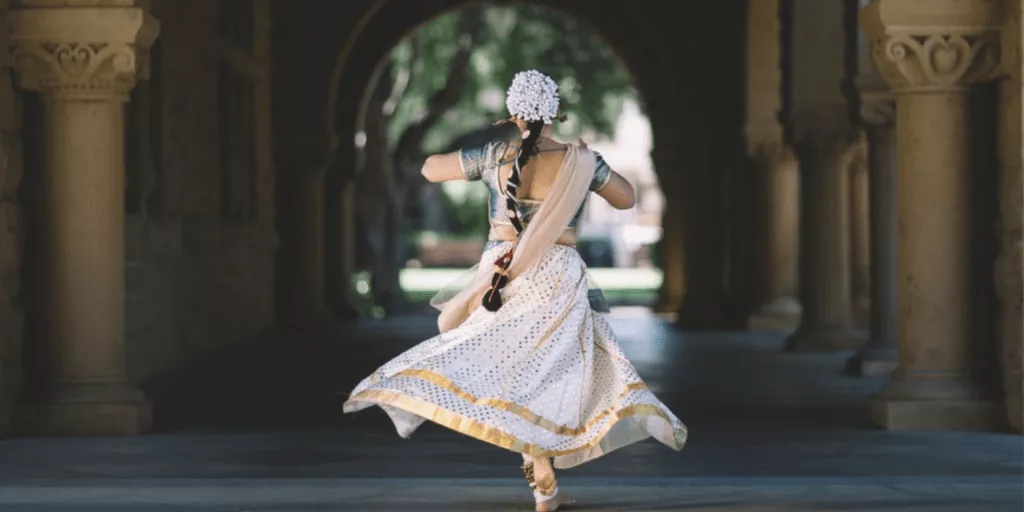Japanese was the first language I really wanted to learn. But in the early 2000s, finding quality resources – let alone native speaker-led courses – in the mid-South was close to impossible.
At the time, bookstores only carried a phrase guide for tourists and the gargantuan Random House Japanese dictionary. Our public library had an older course book from the 80s or early 90s, and after school, I would write hiragana in my notebook.
Because one day, I’d either go to a high school or college that offered Japanese.
That was the plan, anyway.
But there were deterrents on top of the lack of access. And since I seemed unable to speak standard Spanish despite the many lessons, I gave up on Japanese, too.
However, after learning to speak German with some success with self-study (even though my grammar was horrendous starting out), I decided to take Japanese in college.
And…it was a bust.
Don’t get me wrong. I still loved the language. I even loved Genki as a textbook. As far as language textbooks go, Genki was affordable and extremely useful.
Personal life got in the way. And combined with the need to refine my major, I decided to drop the course after a year.
It’s only now, years later, I’ve decided to take Japanese up again. Now I’m learning completely online, with the guidance of an amazing tutor (who also teaches kimono).
Here’s what I’ve learned about how to study Japanese at home.
Learning Japanese online, at home
While attending a Japanese language school or course is ideal, it’s possible to learn any language from home.
The major obstacle is, of course, speaking.
But the good news is that these days, there are a vast number of materials. In fact, it sometimes makes my head spin how many books, online courses, and other guides there are. Not to mention the subtitled dramas, movies, and graded readers.
So, at least, there’s enough to work with. So how should you approach learning Japanese at home?
Hiragana, Katakana, Kanji
Mastering the alphabet is the first step of language learning – no if’s, and’s, or but’s!
Hiragana and Katakana are syllabaries and are fairly straightforward compared to Kanji. Hiragana, in short, is used for words of Japanese origin. Katakana is used for loan words and sound effects. While Kanji are pictographic characters derived from Chinese. In many written books or manga, you may find Hiragana written above the kanji.
While the two alphabets can be mastered over a few weeks, Kanji takes a lifetime.
Personally, Kanji is where I always fall behind. In fact, I would say I’m slower at Kanji than anything else.
However, I’m not strict with learning kanji. I have that luxury because I’m not in an academic or business setting. My general approach is simple:
- Use Kanji on Duolingo for general familiarity
- Use the Kanji mobile app to practice writing the characters
- Note characters when I see them while reading
- Have a book-based reference review meanings of each individual kanji in detail
- When I recognize a new word well, I try to incorporate it into my writing
Over time, I begin to replace the hiragana with the new character.
The good news is that focusing on Japanese vocabulary, especially Kanji, can take up most of my time.
Because the Japanese grammar is the best.

Why Japanese Grammar is Amazing
Okay, so East Asian languages, in general, are pretty darn amazing when it comes to grammar.
Coming from a background of learning languages with numerous case systems and innumerable irregular verbs, Japanese grammar is, in fact, logical.
There are no case systems in Japanese, at least, not in the same way we would see them in a European Language. Adjectives and nouns don’t change their endings based on usage or gender, for example. Instead, there’s a particle, which acts as a preposition to denote things like location (to, from) or possession (of).
Verbs, too, are fairly straightforward. Verbs and adjectives are conjugated but not based on the person speaking. Instead, you only need to know the following items:
- Is it affirmative or negative?
- What tense is it in?
Other verb markers can be added to show hypotheticals, ongoing actions, requests, and so on. But, to be honest, it’s not as cumbersome as the European equivalents.
The main stickler, which comes less in basic Japanese than it does in intermediate or advanced Japanese, is understanding different levels of politeness.
The #1 Stressor for Language Learners: Keigo
One of the most difficult aspects of learning Japanese vocabulary, grammar, and culture is the honorific system, or keigo (敬語). Essentially, honorifics mark the level of intimacy between two people. But it isn’t quite as simple as adding a pronoun and plural verb conjugation, which is what we typically see in Indo-European languages.
Respectful, more polite language, such as using the -masu (ます) form, should be used for strangers, acquaintances, and anyone older than you. It’s also expected in the workplace. But do keep in mind that while you study Japanese, you will encounter more variations of polite and casual language.
There are three general types of keigo. I won’t go into extreme detail, but keep your eye out for them. Those three are:
- Polite Style
- Humble Style
- Honorifics Style
Polite is typically the first verb form in basic Japanese. The humble and honorific styles have their own verb endings.
Certain verb endings in your initial study of Japanese, such as other verb forms like ましょうか, are often in the polite style and only applicable in certain situations and settings. But depending on your textbook, you may not get the spoken usage.
A large part of learning Japanese is jumping into Japanese culture, so don’t shy away from asking your teacher, tutor, or friends questions about keigo usage.
The #2 Stressor for Language Learners: Word Order
Theoretically, I understand the order of a Japanese sentence. But when I go to speak or try to interpret a new sentence, my brain still takes a little more time to adjust. This, of course, is because I’m a native English speaker. So, for me, the word order in a Japanese sentence is in absolute reverse.
While I’m writing, I can work through it. But for spoken Japanese, I’m still a ways away from sounding natural.
7 Tips for Learning Japanese
Language learning is a marathon – that’s true no matter what language you decide to study. When it comes to Japanese, there are a few specific tips that can help:
- Find consistent material. There’s a lot out there for Japanese – which can be a blessing or a curse. Pick one primary material to keep you grounded and prevent overwhelm.
- Work with a tutor. There are several benefits to taking Japanese lessons with a tutor. One is that it keeps you accountable. The second is that you’ll get SO many cultural insights that are left out of textbooks.
- Spend time revisiting kanji. As I said, Kanji can be difficult, if only because it takes time to get used to a pictorial system. If you already know Chinese characters, then this really isn’t as big of a deal. But take time to work on Kanji every day, even if it’s just a review.
- Consider regional dialects. Standard Japanese is usually a polite version spoken in Tokyo. But there are several amazing regional dialects. Consider listening to some of the major ones – they may come up in media or news later on.
- Use graded readers. I’m a big fan of reading, and graded readers are a great way to reinforce vocabulary, review information from your Japanese lessons in a new context, pick up some new words, and see Kanji used in a text you can understand.
- Read about different registers. A register is essentially how a language is used in different situations. Japanese has a variety of registers, and it’s not just formal or informal. Women may be expected to speak more “cutely”, while men have their own casual register. Being aware of these differences is not just a cultural insight, but it can help you navigate conversational Japanese.
- Keep a grammar journal. Finally, and this is a more general rule, keep a grammar journal! This will be a go-to reference when writing and as you advance.
5 Exercises for Boosting Your Japanese Language Skills
I believe that self-motivated exercises are important. But so is a silent period. Many linguists now consider it natural that a language learner may not speak a target language for weeks, months, or even years. But once they’ve accumulated enough exposure and feel comfortable, they will rapidly learn to speak.
And while most people want to reach spoken Japanese fluency, it does take time to nurture that particular language skill. Until then, it helps to have some exercises to practice with. Here are 5 that I enjoy:
- Write haikus. I’ve done this a few times to practice a new word or concept I learn in Genki. It’s hard. Very, very hard. But it’s good for practicing informal speech since a native Japanese speaker may drop articles, and often the short-form of the verb ending is used. I generally like poetry for learning language anyway, but the syllable constraint keeps it interesting as a Japanese writing exercise.
- Mimic native speakers – To practice listening and pronunciation, listen to a song or video of a native speaker. Then slow it down and try to speak with them. If possible, use Japanese subtitles, too, so you can read along. I find this interactive exercise can help with spoken Japanese in that you can be more attuned to the natural sound of the language, as opposed to the textbook polite style.
- Write a short story as you go through your textbook. As you move through your preferred learning material, keep a side notebook with a short story. I like to do this to practice new vocab and grammar in context. And when you go back to revise earlier scenes, you can split into phrases you learned later on.
- Watch Japanese TV without subtitles. Even as a beginner, there’s a lot of value to just listening. You may only understand one word out of 100, but comprehension isn’t the point at earlier stages. Beginners can take value from this exercise because it can sharpen their overall listening ability. Intermediate and advanced students can begin to use it to bump up their vocabulary.
- Follow Japanese speakers on social media. I like to follow a mix of real people and news accounts, but a native Japanese speaker may be easier to understand than long news snippets. As you get more used to seeing and reading casual chats or comments in Japanese, you’ll eventually feel comfortable enough to comment yourself and meet new people.
Resources to Learn Japanese Online
Okay, so, you can’t really learn any language in a void. The good news is that there are numerous resources for learning Japanese. Here are some of the best resources I’ve found over the years:
Speaking
- Italki – This is pretty much the “go-to” tutor-finding resource. I actually found my tutor via Twitter. But iTalki is where I go for additional resources and speaking practice.
- HelloTalk – You can technically speak with HelloTalk, but I prefer writing. Consider leaving voice messages for penpals or in the public notes forum.
- Rosetta Stone – I know there are a lot of mixed feelings and negative sentiments toward Rosetta Stone (check out my in-depth review). But I’ve always loved their “milestone” section that tries to simulate a real conversation. I honestly believe that kind of demand for rapid recall helped me in learning German, so I still like to recommend the program – especially now that it’s more affordable than ever.
Listening
- Japanese for Work – So, I really love all of NHK’s resources. Japanese for Work has an immense library for beginners that includes videos and PDFs so you can read along. Would highly recommend if you don’t have a lot of time but need some functional phrases, especially for those looking for help with business Japanese.
- MyKikitori – Besides having adorable illustrations, this site is entirely focused on listening comprehension with native speaker audio. It’s helpful because it includes both natural and slow speeds and provides a quick quiz to test yourself.
- Irodori – This platform provides more than just listening exercises. There’s grammar and kanji, too. Irodori is helpful in that you have a guided course based on your level to work with.
Writing
- Lirer – Lirer is a vocabulary app. Its segmentation of vocab lists is incredibly useful and fast, especially if you’re new to the language.
- Twitter – Twitter can be one of the best places if you’re short on time, if only because tweets are short and sometimes quite idiomatic, depending on the account.
- Journaling – Writing is all about…well, writing. Consider writing a short story, keeping a diary, or attempting poems to flex your new vocab. For beginners, it’s best to start with a bullet journal to practice basic vocabulary. Over time, you can switch from using a single Japanese word to phrases or full sentences.
Reading
- NHK Web Easy – NHK is at it again with beginner resources. I would actually recommend this for more intermediate readers, since the bulk of the interface is still in Japanese.
- Comic Walker – Love Manga? Me too. This site allows you to read manga legally in Japanese.
- LingQ – The aim of LingQ is learning through exposure. I love LingQ, since I read a lot. But it also has listening features, too.
- Japanese Short Stories for Beginners – I’m reading these short stories alongside working on Genki. It’s a wonderful tool that provides some extra vocab and grammar tips, as well as lets me practice what I’m learning in the textbook.
Grammar and Form
- Genki I and II – This is the standard textbook for Japanese. It’s fairly straightforward as far as language textbooks go. Besides being affordable, it’s really just an excellent intro to learning Japanese and provides the fundamentals and basic Japanese culture tips.
- Bunpo – Bunpo is the grammar component to Lirer, and contains everything from basic Japanese grammar to advanced topics. It has interactive grammar lessons and reviews based on your Japanese level. As a Japanese learning app, it’s the best supplement to Genki I’ve found, and this app is the reason I can type halfway decently in Japanese on my phone.
- Tae Kim’s Grammar Guide – This guide is pretty technical at times. But it’s comprehensive. I find it a useful reference when writing.
My Basic Japanese Study Materials
I’m not using all of these at once. Since I’m not using Japanese every day, I’m keeping it simple. For basic Japanese (NJPT5), I’m focusing on:
- Genki I and II – Primary text
- Bunpo – Grammar review
- Individual lessons with a tutor for accountability and speaking practice
- LingQ – Reading, listening, and vocab exposure
- Japanese Short Stories for Beginners – Casual reading between tasks
- Essential Kanji – For offline review and study of kanji
- Kanji – An iPhone app that helps you to write and recognize the kanji, all of which are separated by language level.
I’ve also tried keeping some Kanji in my physical diary to help me recognize and practice writing the essential vocab. Depending on which level of the Japanese language proficiency test you’re shooting for, these resources may be less helpful. LingQ and intensive kanji study tend to be more useful for the intermediate and advanced levels.
For anything higher than N5, or A2 in the European Framework, I recommend reading from the source language, regular tutoring sessions, tandems, and watching videos with Japanese or no subtitles. For listening comprehension, reading, and keeping up with new Japanese phrases, I use LinQ.
In an academic setting, or if you’re focused on taking an exam, you’ll want to use textbooks geared toward your level. This isn’t so much because textbooks are perfect at teaching a language (they’re not). But they often include exercises that teach to the test. And knowing the structure of the Japanese language proficiency test is half the battle.
Testing yourself
Japanese levels have their own system outside of the European Framework. The Japanese Langauge Proficiency Test is required if you plan to work in Japan. There are five levels:
- N5 – Beginner – A1-A2
- N4 – Lower intermediate – A2
- N3 – Intermediate – B1
- N2 – Advanced, required for non-ESL work – B2
- N1 – Fluent – B2+
For those interested in careers other than teaching English, you’ll need to reach N2.
If you want to see where you fall, you can take mock tests online.




I love all of this information! Thank you so much ❤️ I was in the midst of overwhelm from trying to learn Japanese at home and this post gives me the framework that my brain needs to tackle this linguistic adventure. Thank you again!